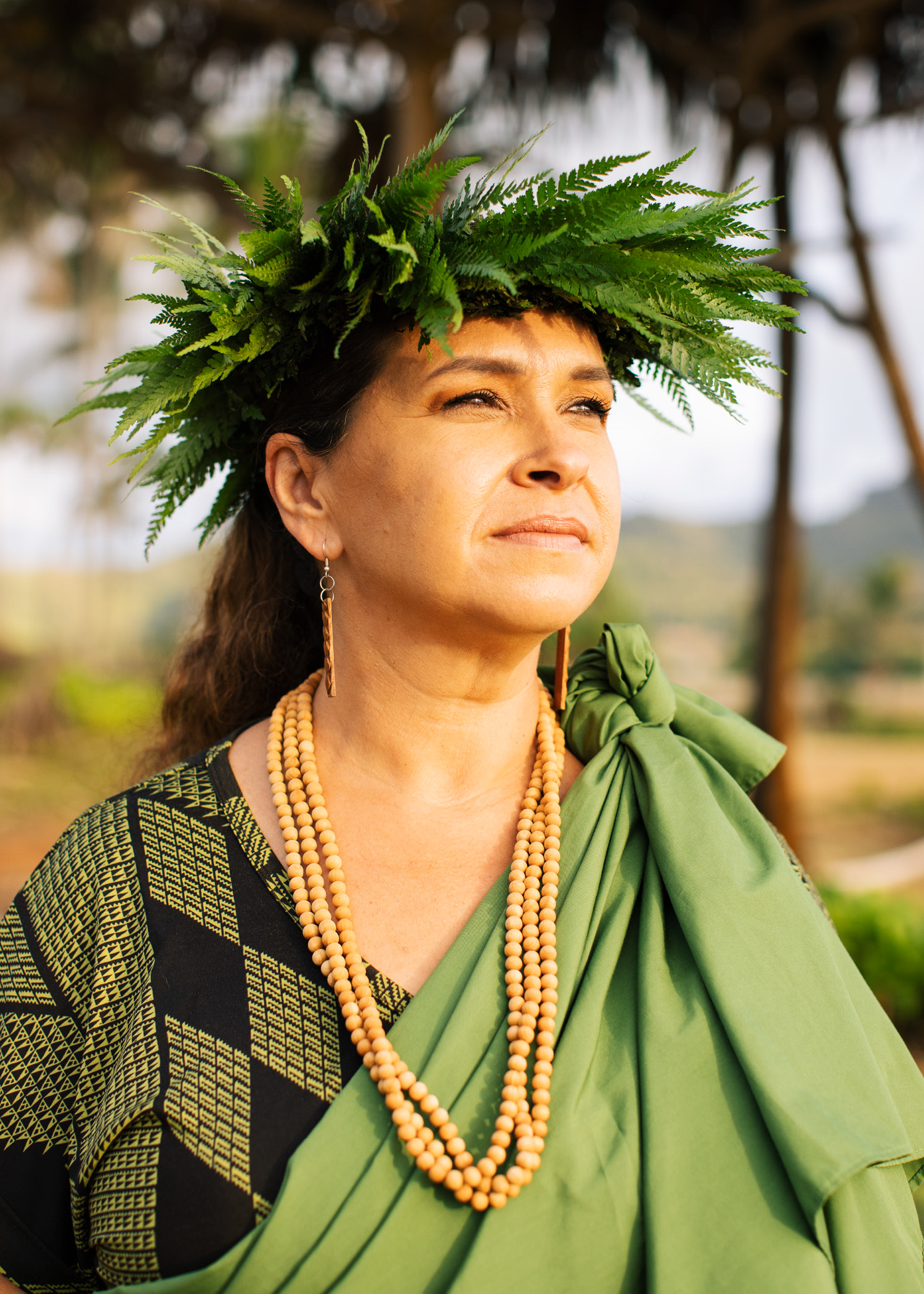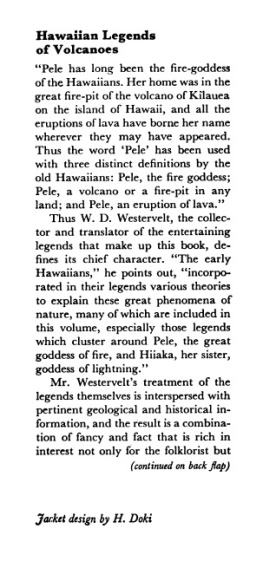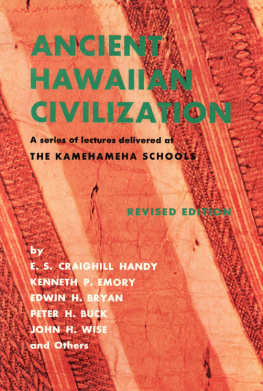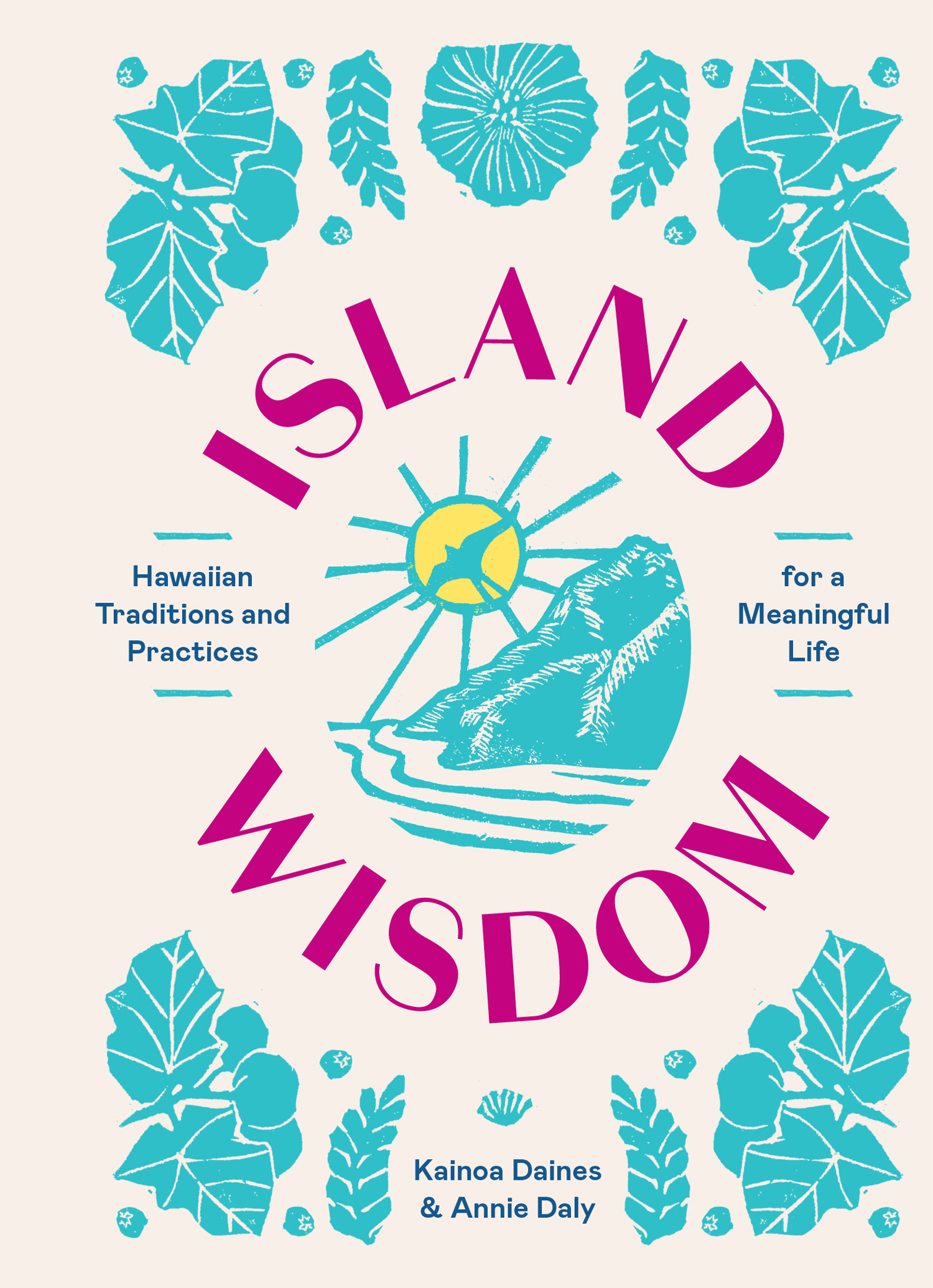Contents
Guide
Pagebreaks of the print version



Copyright 2022 by Kainoa Daines and Annie Daly.
Photographs copyright 2022 by Liz Barney, except for Hawaii State Archives.
Ka Hnano O Puna reprinted with permission from Kainani Kahaunaele 2001 Kainani Kahaunaele.
All rights reserved. No part of this book may be reproduced in any form without written permission from the publisher.
Library of Congress Cataloging-in-Publication Data available.
ISBN 978-1-7972-1693-5 (hardcover)
ISBN 978-1-7972-1694-2 (ebook)
Design by Laura Palese.
Illustrations by Kimberly De Souza.
Typesetting by Happenstance Type-O-Rama. Typeset in Untitled Serif, Mabry Pro, and Chiswick Sans.
This book contains advice and information relating to health and interpersonal well-being. It is not intended to replace medical or psychotherapeutic advice and should be used to supplement rather than replace any needed care by your doctor or mental health professional. While all efforts have been made to ensure accuracy of the information contained in this book as of date of publication, the publisher and the author are not responsible for any adverse effects or consequences that may occur as a result of applying the methods suggested in this book.

Chronicle Prism is an imprint of Chronicle Books LLC,
680 Second Street, San Francisco, California 94107
chronicleprism.com
To
Papahnaumoku
(Earth Mother)



H awaii is so much more than a beautiful paradise. While people around the globe tend to associate the islands with laid-back vacationsa time to check out from the worldthe truth is that Hawaiians are incredibly tuned in to their environment every day. Hawaiis history and culture are ripe with grounding lessons that have helped Hawaiians live more fulfilling lives for thousands of years, and thats why weve come together to write this book: to pass that wisdom on to you.
We are living through a pivotal time in society, one in which weve become so deeply immersed in modern existence that we need to take a step back and look at life through a more meaningful, spiritual lens. As an Indigenous culture filled with traditional wisdom, Hawaii offers that lens. Ancient Hawaiians sailed to the islands from the South Pacific nearly two thousand years ago and were able to not only survive but thrive in complete isolation. How did they do it? And what can we adopt from their philosophies today? Thats what youll learn in the pages that follow. Like many Native peoples, Hawaiians figured out how to live in harmony with natureand themselvesearly on, way before the modern world came along and changed everything. Now its time to revisit those approaches. We believe that embracing Hawaiian values can help you lead a more meaningful life today, and we want to help you do just that.
We are also living in a time when Hawaii is facing so much overtourism that both the locals and the land are sufferingso we also see this book as a way to help visitors understand what Hawaii is truly about. That way, they know how to respect the culture and the people when theyre there. You dont have to travel to Hawaii to reap the benefits of these lessons, as they are universal and great for everyday life, but if you do plan a trip, wed love for you to consider this your know-before-you-go guide.
But first, some introductions.
Kainoa Daines is a Native Hawaiian born and raised in Honolulu. He also has Chinese, British, and Scandinavian bloodlines, so he is well versed in straddling different cultures and embracing all parts of his identity. Kainoa is an executive in Hawaiis visitor industry, an event organizer, the son of a journalist, a local celebrity (in his own mind), and a forever student of Hawaii. He is also a proud member of the Royal Order of Kamehameha I and the Hawaiian Civic Club of Honolulu. He considers it his kuleana (responsibility and privilege) to share the true story of his culture with the world in this book. As such, he has taken great care to be sure that Native Hawaiian teachings are represented correctly, and he is so excited to be a bridge between Hawaii and the rest of the globe.
Annie Daly is a fourth-generation journalist based in New York City (though she was born and raised in Rhode Island). She fell in love with Hawaii as a child, when she spent many summers with her family in Kona on the island of Hawaii. Now, as an adult, she has transferred that childhood love to her career, one that has allowed her to study and write about Hawaiian culture for many years (and ultimately led her to meet Kainoa). Her first book, Destination Wellness , includes a chapter on her favorite well-being lessons found in Hawaiian practicesand she has learned even more about the islands since it was published. Like Kainoa, she considers herself a forever student of Hawaii, and feels so grateful to be able to help spread Hawaiis beautiful messages far and wide.
Gathering the information within this book was an exciting journey. Like many Hawaiians, Kainoa doesnt consider himself an expert on his culture, but rather a perpetual student (more on Hawaiian humility on ). One of his favorite Hawaiian proverbs is Aohe pau ka ike i ka hlau hookahi, which translates to All knowledge is not taught in the same school. With that proverb in mind, we wanted to include many different Hawaiian voices and perspectives in this book so that you, too, can learn from as many people as possible. Together we island-hopped to interview nearly twenty Hawaiian community leaders, activists, teachers, farmers, storytellers, elders, and moreall of whom guided us with incredible wisdom on a variety of topics. As we got deeper into each interview, four themes emerged:
Aloha, a deep, innate love;
ina, the land that takes care of us all;
Moolelo, the art and importance of storytelling;
Ohana, the family that loves us, and that we care for in return.

Its our hope that by learning about each of these four themes, youll come away from this book with a broad understanding of Hawaiis cultural richnessand the tools you need to weave it into your own life.
A Brief Primer on Hawaiis Geography and History
Its impossible to understand the true beauty of the lessons that follow without a basic understanding of Hawaiian history and geography. After all, one of the reasons that perceptions about Hawaii and her culture have been skewed for decades, if not centuries, is that Hawaiian culture is often taken out of context. But the context is crucialso consider this your brief primer before we continue.


















